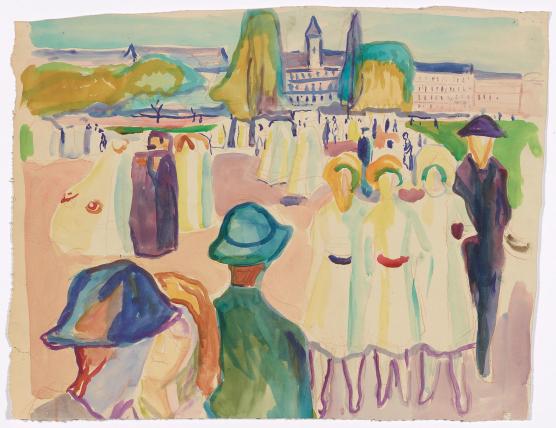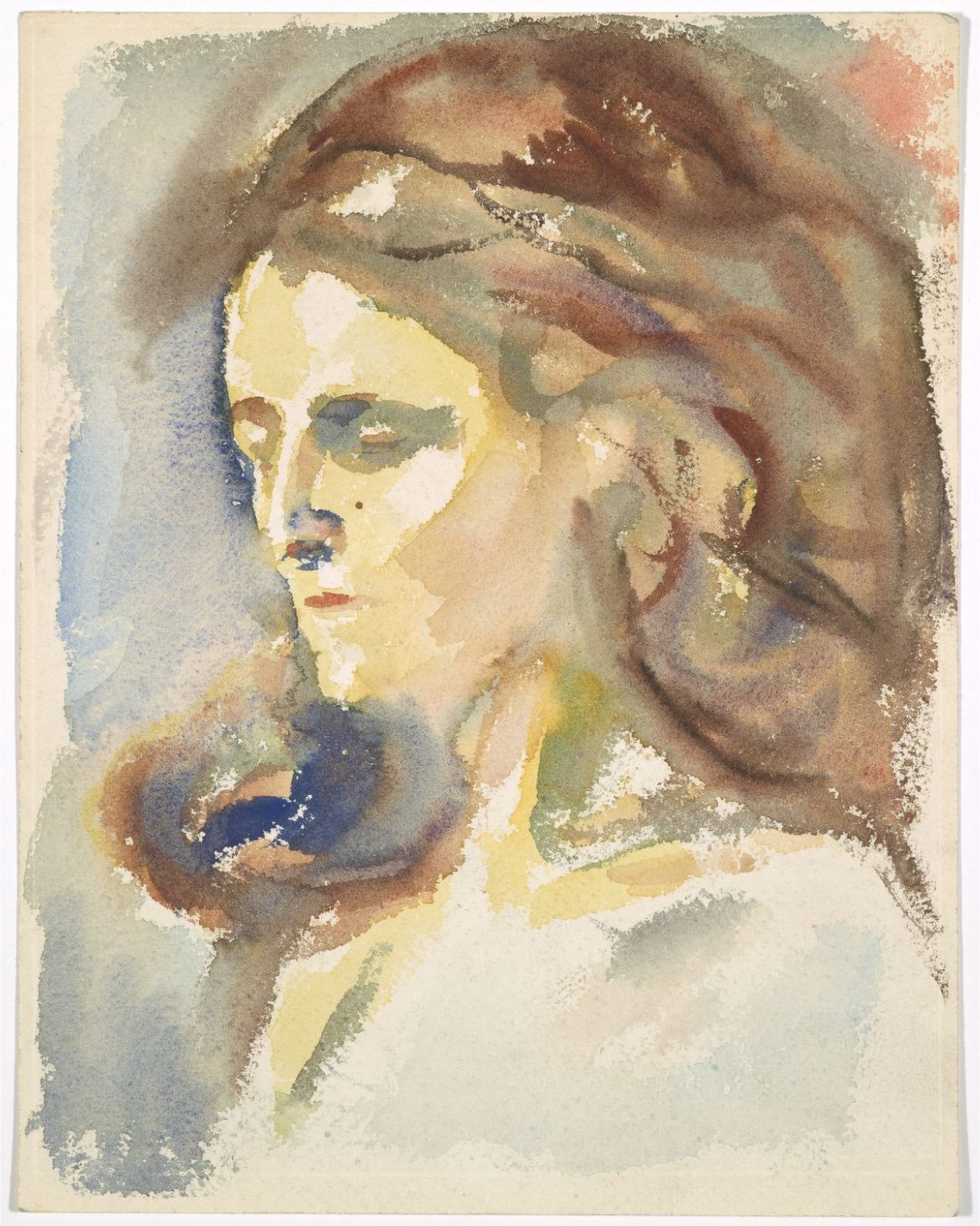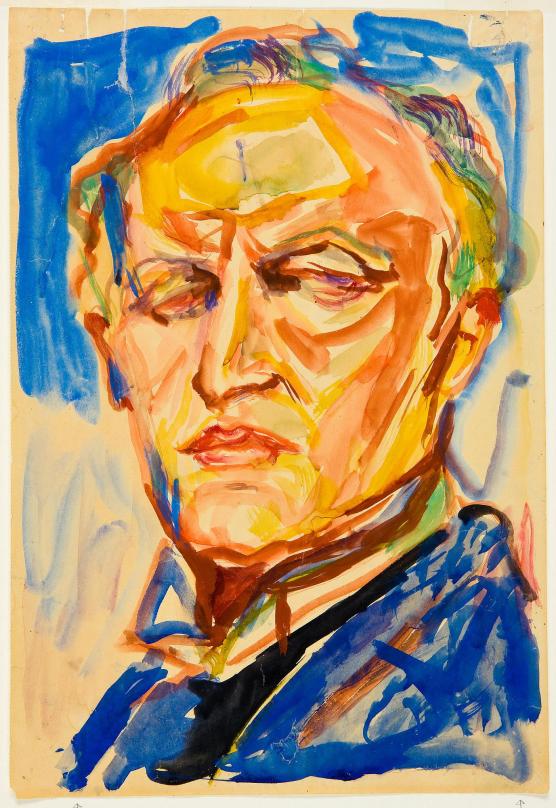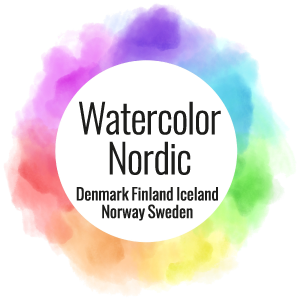Edvard Munch’s watercolours
There are around 600 paintings made in watercolour among Edvard Munch’s works, a rather modest amount compared to the full number of drawings, paintings and graphics in the artist’s body of work. Nevertheless, watercolours occupy an important place in his art, and they are of high artistic quality.
As a child, watercolour became a favourite means of expression for Munch, and the technique was used as a medium to reproduce motifs in colour. These were fairytales, scenes with Indians and knights, flowers, ornaments, still-lifes, goblins, and caricatures. He later created fine little landscapes, pictures of buildings and churches, interiors from his family’s apartments, and more. When Munch decided to become a painter towards the end of 1880, he turned to his watercolour case less frequently for a few years, but some nice renderings of urban landscapes, portraits, and genre scenes have been left behind also from this time.
In the 1890s and towards the end of the century, Munch began to use the technique in new ways and expanded his repertoire considerably. In many of the pictures, he combined watercolour with other media such as pencil, charcoal, gouache, crayons, pastels, and even oil. Motifs with symbolic content and illustrations for poems were now part of his watercolour work. Several such works belong to Munch’s Frieze of Life, his series depicting young love, its growth and dissolution in jealousy, despair, and anxiety, but also themes of sickness and death. Other works depict motifs from places Munch spent time in, be it landscapes and scenes he observed on the street, or caricatures and stage drafts made for theatre productions. Another important motif also appeared in Munch’s art: the naked human body.
In the second half of his career, Munch also used watercolour to create several drafts for monumental projects, be it decorations for the Oslo’s University Hall in the period 1909–16, the series around his symbolic pictorial interpretation of life The Human Mountain / Towards the Light, or decoration drafts for the Oslo City Hall from the late 1920s onwards. Several of his watercolour works depicted the construction of his studio at Ekely, the forest and landscapes near the property, worker motifs and agricultural scenes. Some beautiful portraits and self-portraits were created here, along with many pictures of both female and male nudes. It seems like Munch found watercolours particularly well suited for the reproduction of the human body. When he suffered from an eye disease in the early 1930s, images of his diseased eye caught on the retina were conveyed in watercolour. Some of his last works are of scenes from the beach that he visited with the watercolour box under his arm.
Petra Pettersen
![]()
Link to Edvard Munch’s paintings at the Munch Museum:
https://munch.emuseum.com/en/advancedsearch/objects/medium%3Aakvarell






